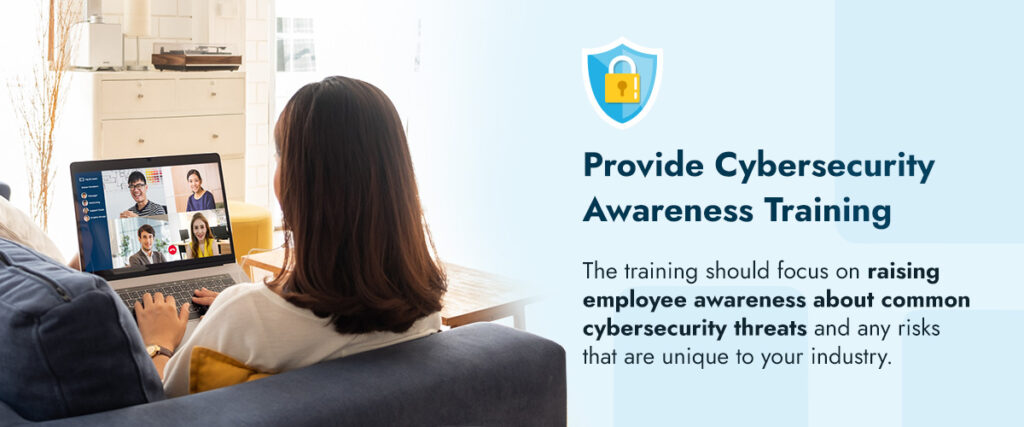
How to Support Remote Workers
Remote working is fast becoming the norm. In the last five years, the remote workforce has grown significantly — and it’s not about to slow down. Almost 28% of the workforce will be working from home by 2025. However, the shift is not without challenges. Allowing access to a company’s IT networks from multiple entry points leaves it vulnerable to malicious external attacks.
Understanding the IT tech issues that remote workers face helps you get ahead of them, protecting your company from vulnerabilities. Addressing the challenges early helps maximize your business’s profitability by ensuring effective remote working structures and conditions.
IT Challenges for Remote Workers
Since remote working lifts geographical barriers, it’s harder for tech teams to manage employee’s IT needs. Identifying the most significant IT challenges your remote workers might encounter can help your company know exactly where to focus its strategies. Here are the top challenges organizations face with a growing remote workforce.
Physical Device Security
Many remote workers still use their personal computers and phones to complete work tasks. As a result, it’s more difficult and time-consuming to manage employee devices. This device use also increases security risks because it’s harder to launch security updates and patches than it would be for centralized company-owned equipment. The lack of timely software updates makes systems vulnerable and reduces device performance, slowing down productivity.
Remote Desktop Protocol (RDP) can connect and secure Windows devices located anywhere in the world, creating a more accessible landscape for your workers and IT team. However, an unsecured RDP is a point of vulnerability that attackers may use to compromise business networks. Using RDP alone is not enough to create a secure environment.
Internet Connectivity
Poor internet security exposes the company to many threats, including breached access to sensitive company and personal data. When a remote worker has an insecure home network or works away from home and uses a public network, they can put the company at risk. In particular, public networks increase the risk of man-in-the-middle attacks — attackers on the network may take advantage of people using the same connection to access files and documents.
Additionally, home internet connections may have limited bandwidth, configuration issues and network equipment limitations that can affect productivity.
Phishing and Other Scams
It’s true that your employees are your company’s first line of defense against data breaches. With sufficient knowledge, employees can quickly spot phishing scams, credential theft and other potential attacks and stop them before they go too far.
This level of awareness can be difficult to attain when you’re managing remote teams around the world. When a remote worker is checking their work email at a coffee shop several time zones away, and their device isn’t secure and they don’t have the right training, one email scam could be all it takes to comprise their sensitive information.
Slow Communication
Whether your team is located in the same city or spread across multiple continents, communication can be a hindrance when everyone isn’t working in the same office. Everyone has to communicate virtually, which can take even more time when the IT team is working on an issue for someone several hours behind or ahead. If tech issues aren’t resolved promptly, it can impact worker productivity, motivation and morale, not to mention possibly compromise company data.
Further, unclear IT support guidelines and instructions can derail projects and prevent remote teams from working effectively.
How to Provide Remote IT Support to Workers
There are many ways you can improve how your IT support team handles IT challenges for remote workers.
1. Supply Remote Desktops and Devices
Look into supplying your remote workers with company equipment. This makes it easier to deploy company-wide updates and reduces the risks and vulnerabilities of using personal devices for work. Overall, offering company tech simplifies IT support, provides more control over remote work security challenges, and allows uniform access.
2. Provide Cybersecurity Awareness Training

This training is a necessity for any new remote worker joining your team, and refresher training for existing remote workers helps ensure secure systems. The training should focus on raising employee awareness about common cybersecurity threats and any risks that are unique to your industry.
Here are some tips for training remote IT support workers:
- Help them understand their responsibility to protect sensitive information and comply with confidentiality laws.
- Advise them to create and use strong passwords that they change regularly.
- Teach them to recognize phishing emails and avoid online scams by deploying fake attacks.
- Provide a refresher about protocols and policies for responding to security breaches and incidents.
- Educate them on best practices for using company-owned equipment.
- Show them how to recognize insider threats and vulnerabilities.
By increasing awareness across your team, you can rest assured that fewer workers will fall victim to scams that compromise company information.
3. Create a Cloud-Based Environment
Moving all operations to the cloud allows centralized access to company data and improves workplace efficiency and data security. It’s easier and more cost-effective to back up and restore data in case of breaches. A cloud environment also allows for higher performance, accessibility and availability for all remote workers, reducing downtime.
The best way to move your company operations to the cloud involves partnering with a cloud security expert. The right IT cloud services ensure accessibility, improve security and ensure remote workers’ tech issues are resolved quickly and effectively. Then, monitoring the cloud network and enabling automatic backups protect your company from threat actors once the cloud environment is implemented.
4. Implement Strict Security Protocols
One of the best ways to safeguard an organization with remote workers is by enhancing cybersecurity protocols. A strong cybersecurity policy and infrastructure help secure computer systems and networks from unauthorized attacks and access. A cybersecurity expert is in the best position to safeguard your organization against potential threats, including phishing attacks, malicious applications on computers and hacked emails.
Examples of strict security protocols to implement include:
- Assessing IT systems to identify vulnerabilities and potential risks.
- Implementing strong passwords and multi-factor authentication.
- Conducting regular data backups.
- Keeping company software and systems up-to-date.
Working with experts who provide comprehensive IT and cybersecurity remote support can also help your employees learn how to stay vigilant and maintain a secure digital environment.
Get Contigo Technology’s Comprehensive IT Support for Your Remote Workforce
Handling all the IT support for your remote workforce on-site may weigh you down and shift your focus from the core business. Contigo Technology is a managed service provider that offers IT support for your remote workforce. We can help you keep your partially or completely remote teams motivated, coordinated and secure.
You can count on us to provide your remote teams with lightning-fast responses to support requests, customized user setups, and a robust data protection plan. Contact us today for more information about how we can provide technical support to protect your business.
